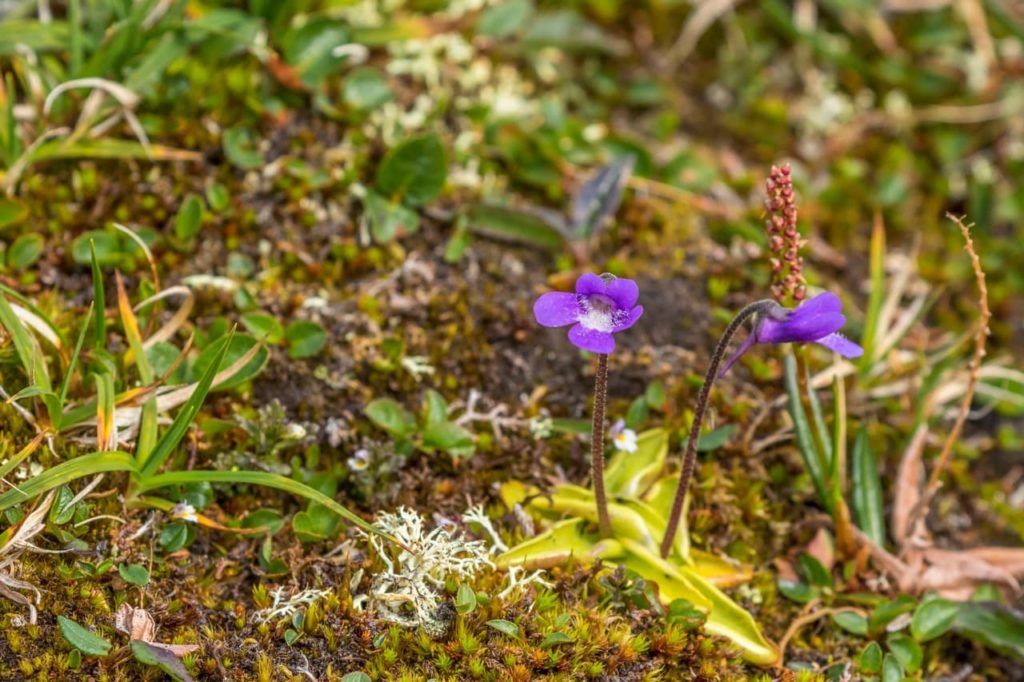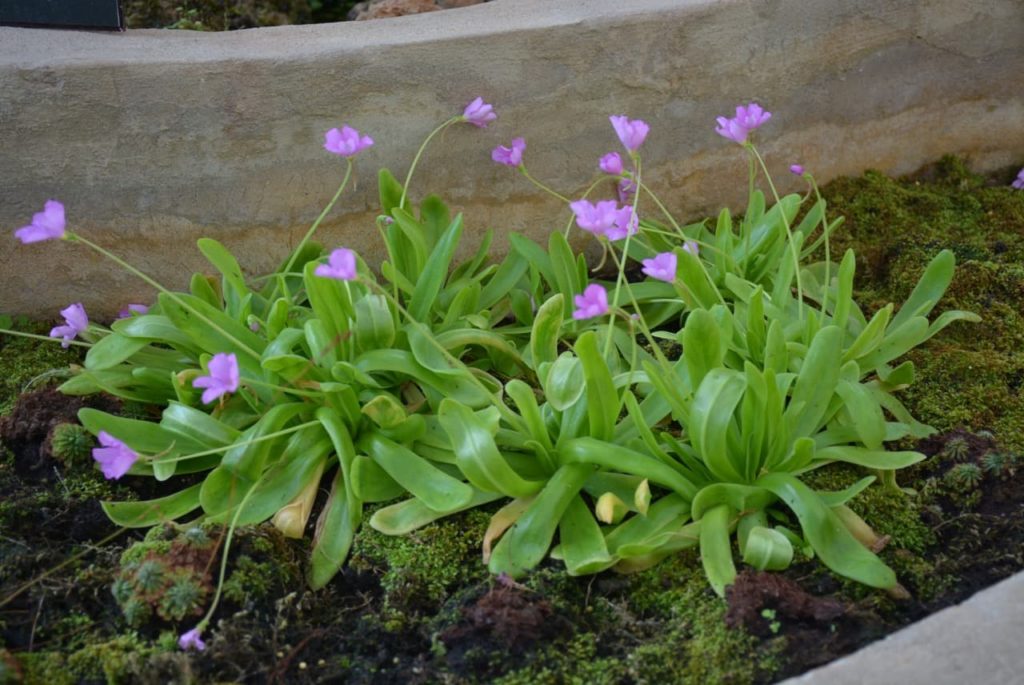CARNIVOROUS > PINGUICULA
IN THIS pathfinder
PINGUICULA GUIDES

Pinguicula , also known as ‘ Butterworts ’ , are carnivorous plants that are interesting option to supply to a carnivorous plant collection .
The sticky , succulent - alike leaves on these plants attract and trap the industrial plant ’ prey .
“ My favorite Carnivorous flora are Butterworts , also have it away as Pinguicula , ” divvy up Julie Kirby , the owner of Triffid Nurseries .

P. crystalina subsp. hirtiflora
“ This is purely because I find them pretty , as they have a feminine visual aspect . ”
Overview
PreferredFull sun or part shade
ExposureSheltered
Height0 – 0.1 MiB

Spread0 – 0.1 M
Bloom TimeJune to August
PreferredSand or corpse

P. crystalina subsp. hirtiflora
MoistureMoist but well - drain
pHAcidic or electroneutral
Pinguicula is a genus of for the most part perennial carnivorous flowering plants .

There are around 80 species in totality , some of which are native to Europe , North America and North Asia.1Pinguicula the Butterworts . ( n.d . ) . Botanical Society of America . retrieve June 12 , 2023 , fromhttps://botany.org/home/resources/carnivorous-plants-insectivorous-plants/pinguicula-the-butterworts.html
Forming stemless rosettes , these butterwort change dramatically in their environmental need and the clime in which they turn , with both tropical and temperate metal money available .
Tropical type retain their carnivorous leaves class - circular , whilst temperate type can often form hibernacula ( slightly closed buds ) during their wintertime quiescence period.2Growing Butterworts . ( n.d . ) . Colorado Carnivorous Plant Society . Retrieved June 12 , 2023 , fromhttps://coloradocarnivorousplantsociety.com/growing_butterworts.htm

P. gigantea
Some types within both categories have unlike type of foliage that they produce depending on the season .
To catch their prey , these plants transude a pasty marrow that immobilise feed on their leaves , where they can then be digested .
“ I have a bighearted thing for photographing carnivorous plants such as butterworts , as their shape and contour are fun to examine close up with a macro lens , ” share Garden Photographer Stephen Studd .
Here in the British Isles , UK growers can choose to arise a couple of metal money that are native to our shores : Pinguicula vulgaris(Common Butterwort ) orP. grandiflora(Large - blossom Butterwort ) .
Though these two varieties are most usually uprise under glass rather than alfresco in garden , they can also be grown outdoors in the correct growing conditions and environment .
you may also develop more tender varieties from elsewhere , including popular Mexican varieties , but the native eccentric are manifestly hardier than the tropic varieties .
How To Grow Pinguicula
Pinguicula is not of necessity too intriguing to acquire , but it is important to recollect the environmental conditions that this carnivorous flora requires for grow it successfully .
“ The belief that growing Carnivorous Plants is hard is a huge misconception , ” says Julie .
“ In fact , it ’s not hard at all if you follow the upkeep advice usable from agriculturalist like myself . ”
Like other carnivorous plants , butterwort tend to thrivein low-down - fertility and acidulent soilsthat are dampish yet free - draining or poorly drained ( count on the specific species and variety ) .
butterwort can often be propagated by inseminate seeds as shortly as they are mature .
Sow them onto the surface of the growing culture medium with some blue heat from a heat lustrelessness or het up propagator .
These seeds need luminosity to germinate .
With some varieties , it is also possible to dissever sleeping buds during the late winter month .
“ Many Pinguicula can be propagated from leaf cuttings , ” explain Colin Skelly , a Horticultural Consultant .
“ mildly tease away the leaf from the stem and place on a stack or tray of 2 part vermiculite to 1 part perlite , making sure to keep the airfoil damp but not pissed . Small plants should leave in 1 - 2 months . ”
These plant prefer an environment similar to the climate in which they are found in the wilderness .
normally found in boggy wetland environs , some of the hardier native types might be admit in a wetland or bog garden outdoors , in full sunlight or partial shade .
Usually , agriculturist should aim to mime the natural surroundings of these industrial plant as close as they can while growing butterwort cloak-and-dagger or indoors in peck , where they need undimmed , filtered unclouded .
Butterwort Care Guidelines
Pinguiculas do not lean to be too challenging to manage for over time , but you will demand to give some thought – not only to where you position your plants – but also to how you irrigate and otherwise care for them over the grade of the year .
As refer above , butterworts will usually be develop indoors , where they will require a position in promising but filtered illumination .
Hardier aboriginal case grown outdoors in the UK will typically cope in full sun ( as long as the condition remain consistently moist ) or in part shade , but can not cope with shadier conditions .
Watering is the most significant gene to get right when successfully raise these carnivorous plants .
verify you understand the precondition required by the butterwort you are growing , as some like more gratis - run out conditions than others .
piss from below , lay a saucer occupy with water at the base of the plant pots throughout the summertime .
render to use rain where potential and trickle or boil tap water where it is not .
Like other carnivorous flora , butterworts originate in low - fertility environment and do not ask any extra feeding .
ship’s boat species will need to be prevent costless from frost and dusty temperatures , as some will not make out if temperature fall below 5 ° C .
Temperate type grapple with coldness by enroll a period of sleeping over the winter month .
In wintertime , when temperate butterwort plants go dormant , less water will be want .
At this time of the year , keep the growing medium just damp , but make indisputable that waterlogging does not pass as this might cause common fungal issues to arise .
Like other carnivorous plants , these are tough little specimen that can generally cope with a lot and they are not particularly prone to pest or disease problems .
However , they can sometimes be bothered by slugs or snails when growing outside .
Indoors , problems are typically due to shortcomings in the environmental conditions or precaution .